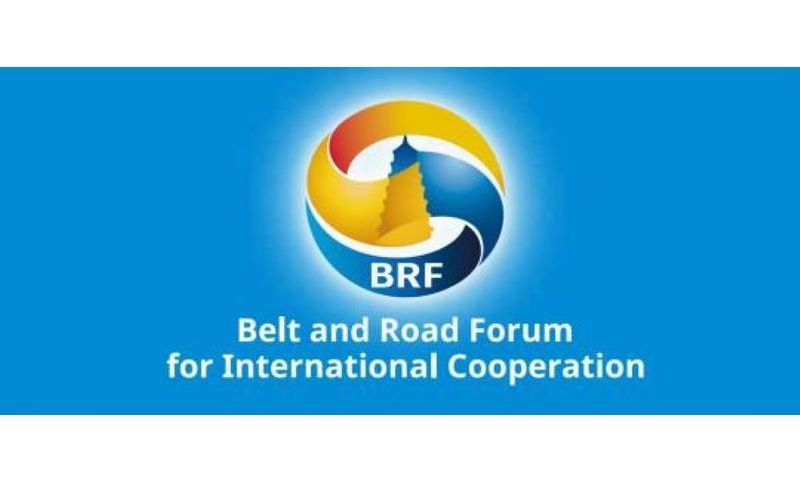President Donald Trump dramatically increased pressure on China to reach a trade deal by announcing on Sunday he would hike US tariffs on $200 billion worth of Chinese goods this week and target hundreds of billions more soon.
The move marked a major escalation in trade tensions between the world’s two largest economies and a shift in tone from Trump, who cited progress in talks as recently as Friday.
The Wall Street Journal reported on Sunday night that China was considering cancelling this week’s trade talks in Washington in light of Trump’s comments that took Chinese officials by surprise. US officials did not immediately know if China would attend and the US Trade Representative’s Office did not immediately comment.
A roughly 100-person Chinese delegation had been expected to accompany Chinese Vice Premier Liu He for the talks, according to one Trump administration official. US Treasury Secretary Steven Mnuchin described last week’s round in Beijing as “productive.”
A less than rosy update from United States Trade Representative Robert Lighthizer, including details that China was pulling back from some commitments it made previously, prompted Trump’s decision and jab on Twitter at Beijing, officials said.
“The Trade Deal with China continues, but too slowly, as they attempt to renegotiate. No!” Trump said in a tweet.
Financial markets reacted negatively. S&P 500 e-minis were down 54.75 points, or 1.86%, while Nasdaq 100 e-minis were down 168 points, or 2.14%, and Dow e-minis were down 484 points, or 1.83%.
Trump said tariffs on $200 billion of goods would increase to 25 percent on Friday from 10 percent, reversing a decision he made in February to keep them at the 10 percent rate after progress between the two sides.
The president also said he would target a further $325 billion of Chinese goods with 25 percent tariffs “shortly,” essentially targeting all products imported to the United States from China.
Trump wants to keep some, if not all, of the existing tariffs on China as part of any final trade deal to ensure China lives up to its commitments, a White House official said on Sunday.
Mindful of his 2020 re-election bid, Trump suggested the measures were not leading to price increases for US consumers. “The Tariffs paid to the USA have had little impact on product cost, mostly borne by China,” he tweeted.
Tariffs on Chinese goods are actually paid to the United States by the companies importing the goods. Most of those companies are US-based. American businesses, while largely supportive of Trump’s crackdown on China’s trade practices, are eager for the tariffs to be lifted, not increased and expanded.
“Raising tariffs means raising taxes on millions of American families and inviting further retaliation on American farmers,” said Christin Fernandez, a spokeswoman for the Retail Industry Leaders Association.
Nevertheless, the president’s aggressive strategy drew rare bipartisan support from US Senate Democratic leader Chuck Schumer, who urged Trump to “hang tough” in a tweet: “Don’t back down. Strength is the only way to win with China.”
NOT GETTING CLOSE?
Trump’s announcement cast doubt on earlier expectations that China and the United States were closing in on a deal to end a trade war that has slowed global growth and disrupted markets.
“It’s obviously not good news for the market. The administration had sent signals an agreement was close before. This causes us to question how close we are,” said Rick Meckler, a partner at Cherry Lane Investments in New Jersey.
As recently as Friday, Trump said talks with China were going well.. Mnuchin expressed hope last week that the Beijing and Washington rounds would lead US advisers to a recommendation to Trump on whether a deal was reachable, and a White House official told Reuters that dates were being looked at in June for a potential meeting between Trump and Xi.
White House economic adviser Larry Kudlow told Fox News that the president’s tweet was a warning to China.
“The president is, I think, issuing a warning here, that, you know, we bent over backwards earlier, we suspended the 25 percent tariff to 10 and then we’ve left it there. That may not be forever if the talks don’t work out,” he said.
But Michael Pillsbury, an informal trade adviser to Trump and the director for Chinese strategy at the Hudson Institute, said Kudlow’s remarks downplayed the president’s intent.
“I take the president’s tweet at face value. I was disappointed that Larry Kudlow downgraded it to a mere warning, which may tend to undermine American credibility as the Chinese delegation prepares its position” ahead of this week’s talks, he said.
Despite Mnuchin’s more upbeat interpretation of the last negotiating round, Pillsbury said he assumed Trump’s tweet came after a more sobering update from Lighthizer, including information that China had walked back from some things to which it had previously agreed.
Last week, industry sources said they believed the talks were in the endgame, but the Trump administration official said aides had told the president that significant hurdles to a deal remained.
The increase in US tariffs on Friday will be the first move of that kind since Trump imposed 10 percent tariffs on $200 billion of Chinese goods in September, coming on top of 25 percent tariffs on $50 billion of goods enacted earlier last year.
Negotiations about tariffs have been one of the remaining sticking points between the two sides. China wants the tariffs to be lifted, while some US officials believe at least some of them should stay in place as a way to enforce any eventual deal.






















